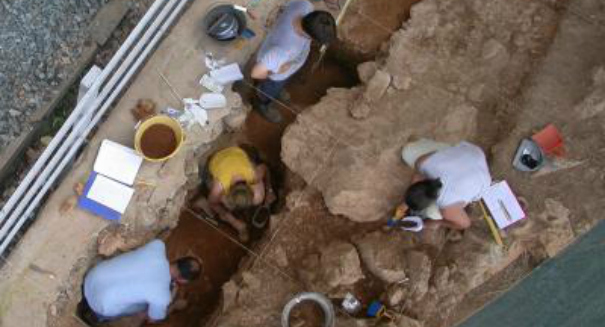
The findings suggest that Neanderthals were far more forward thinking that previously believed.
According to a news release from the University of Colorado at Denver, new evidence reveals that Neanderthals organized their living spaces like modern humans. The results show that Neanderthals slayed and prepared animals, built tools and congregated round the fire in various areas of their shelters.
“There has been this idea that Neanderthals did not have an organized use of space, something that has always been attributed to humans,” noted lead author Julien Riel-Salvatore, assistant professor of anthropology at the University of Colorado Denver, in a statement. “But we found that Neanderthals did not just throw their stuff everywhere but in fact were organized and purposeful when it came to domestic space.”
The results are based on diggings at Riparo Bombrini, a toppled rock shelter located in northwest Italy where both Neanderthals and, later, early humans resided for thousands of years. The research concentrated on the Neanderthal levels while future research will investigate the more recent modern human levels at the site. Researchers hope to examine in contrast how the two groups arranged their living spaces.
The site is made up of three levels accredited to Neanderthals. Researchers discovered that Neanderthals separated the cave into distinct areas for distinct activities. The top level was utilized as a task site — probably a hunting stand — where Neanderthals could slay and prepare animals for cooking. The middle level functioned as a long-term base camp and the bottom level was a short-term residential base camp.
The researchers discovered a high frequency of animal leftovers in the rear of the top level, suggesting that the area was probably utilized for slaying animals. They also discovered proof of ochre use in the rear of the shelter.
“We found some ochre throughout the sequence but we are not sure what it was used for,” Riel-Salvatore posited. “Neanderthals could have used it for tanning hides, for gluing, as an antiseptic or even for symbolic purposes – we really can’t tell at this point.”
In the middle level, artifacts were dispersed differently. Animals bones were primarily located at the front as opposed to the back of the cave. This was also the case with stone tools. A hearth was in the rear of the cave approximately 0.5 to 1 meter from the wall. This setup would have permitted heat from the fire to move around the living area.
“When you make stone tools there is a lot of debris that you don’t want in high traffic areas or you risk injuring yourself,” Riel-Salvatore remarked. “There are clearly fewer stone artifacts in the back of the shelter near the hearth.”
According to researchers, the bottom level is the least understood because it was revealed only over a very tiny area. More stone artifacts were discovered immediately inside the shelter’s mouth, implying tool creation may have taken place inside the part of the site where sunlight was plentiful.
The findings suggest that Neanderthals were far more forward thinking that previously believed.
The results are described in greater detail in the Canadian Journal of Archaeology.

Leave a Reply